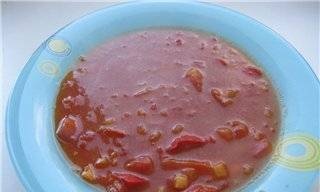Fats, carbohydrates and proteins in vegetables and fruits |
|
Energy food elementsFood should provide a person with enough energy to maintain body temperature, ensure the work of muscles and internal organs. If the food is low in calories, a person quickly feels hungry and tired, becomes lethargic. FatsThe most high-calorie foods are high in fat: fatty meat and animal fats, butter, sour cream, margarine, fatty fish, etc. Some high-fat foods also contain vitamin A, vitamin D and minerals, especially phosphorus. However, vitamin C is almost completely absent in them. Of vegetables and fruits, only nuts and almonds, as well as fruit seeds, are rich in fats. They usually contain 50-60% fat (100 g of nuts give the body 600-700 calories). CarbohydratesFoods rich in starch and sugar also give a lot of energy: flour, cereals, bread, sugar, honey, jams, confectionery... However, their composition is one-sided, the content of vitamins and minerals is very low. Fresh vegetables and fruits contain up to 10% carbohydrates, potatoes contain starch reaches 20%, and in grapes sugar - up to 18%. The energy value of dried fruits and berries is 290-310 kcal per 100 g of food and reaches 60-70%. Fruit and vegetable sugars have, due to their composition, a special value for the body. The simple sugars contained in them - fruit and grape - are absorbed by the body without digestion and quickly replenish energy reserves. ProteinProteins are needed by the body to form cells. If there are few proteins in the body or they are monotonous in their composition, it withers or falls ill. The lack of proteins is especially pronounced in childhood, during the growth of the body. In this case, not only the presence of proteins in general is essential, but also their composition.Proteins, which in their composition are close to the proteins of the body and due to this can be best used by him for the formation of their cells, are called complete proteins. Proteins that only partially satisfy the needs of the body are called inferior. Meat, fish, eggs, milk and their products are the best sources of complete proteins. There is little protein in vegetables and fruits (1-3%), only legumes are relatively rich in proteins. In addition, vegetable proteins are generally of little value. During metabolism, proteins, like carbohydrates and fats, burn in the body, being a source of energy. Of the protein-rich foods for salads, cottage cheese is most suitable. I. Abramson, Salme Masso "Salads and Refreshing Drinks" |
| Kiwi's benefit | What is the ketogenic diet and who benefits from it |
|---|
New recipes
 Human health, ability to work and mood largely depend on nutrition. The need for food varies among people, it depends on age, work and many other factors. However, the basic requirements for food are the same. Plant and animal products nourish the body, and the value of food products is determined by their composition.
Human health, ability to work and mood largely depend on nutrition. The need for food varies among people, it depends on age, work and many other factors. However, the basic requirements for food are the same. Plant and animal products nourish the body, and the value of food products is determined by their composition.






